CELL STRUCTURE
At a microscopic level, we are all composed of cells. In fact, the average human body is made up of 37.2 trillion cells. Our muscles, our organs, our hair and even our teeth are made up of cells. Every single piece of us!
So what is a cell? Cells are the basic building blocks of all living things – stand-alone living entities able to eat, grow and reproduce. Cells group together to form tissues, which in turn group together to form organs, like the heart and brain.
Cells can have many specialized parts, each with a different function to perform. Human cells consist of a number of parts. Because of their complex make-up, human cells fall into a category of cells called eukaryotes.
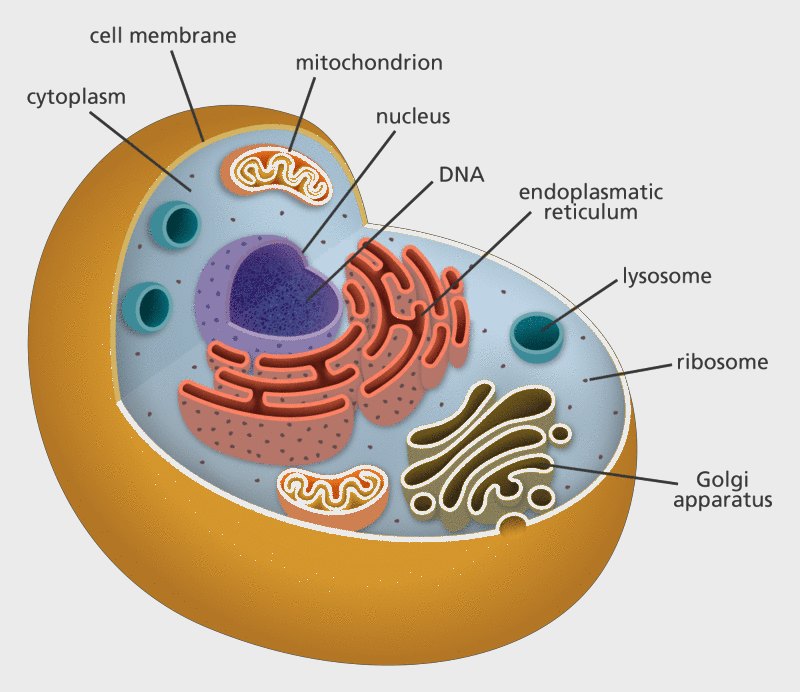
The Cell Membrane (aka plasma membrane or cytoplasmic membrane) is a biological barrier that separates and protects the interior of all cells from the outside environment.
Cytoplasm is the jelly-like fluid that fills each cell and is enclosed by the cell membrane. It is mainly composed of water and proteins that have been made by the cell.
The Nucleus serves as the cell’s command center, directing the cell to grow, mature, divide, or die. It also stores DNA (deoxyribonucleic acid) – the cell’s genetic material.
Mitochondria are complex structures that convert the energy from food into a form that the cell can use.
The Endoplasmic Reticulum is a network of tubes and sacs that helps process molecules created by the cell and also transports these molecules to their specific destinations either inside or outside of the cell.
The Golgi Apparatus packages molecules processed by the endoplasmic reticulum to be transported out of the cell.
Lysosomes act like the garburators of the cell. They break down and recycle worn-out cell components, destroy invading bacteria and viruses, and rid the cell of toxic material.
Ribosomes are the molecular machines responsible for making proteins (protein synthesis). Enzymes are specialized proteins responsible for speeding up the chemical reactions that take place within cells.
How do Human Cells Replicate? Mitosis.
Mitosis is a five-phase cell division process in which one cell (the mother) ultimately produces two new cells (the daughters) that are genetically identical to itself. A single cell cycle can take up to 24 hours, start to finish.
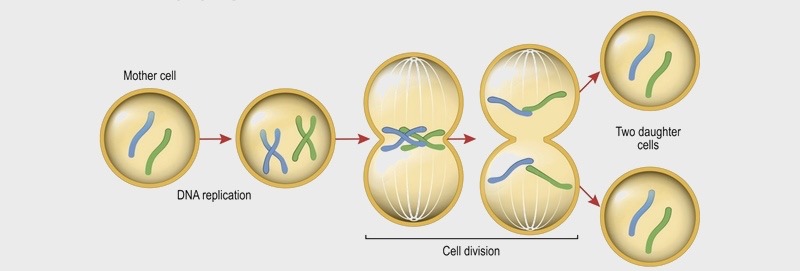
The majority of the cell divisions that happen in the human body involve mitosis. During development and growth, mitosis populates an organism’s body with cells, and throughout an organism’s life, it replaces old, worn-out cells with new ones.
BACTERIA
Bacterial cells are a lot simpler than human cells in terms of their internal machinery. In fact, they are the simplest cells in existence today. They plainly consist of a cell membrane, cytoplasm, DNA and sometimes strands of flagella that are used to propel the cells. Because of their very simple make-up, bacteria fall into a category of cells called prokaryotes.
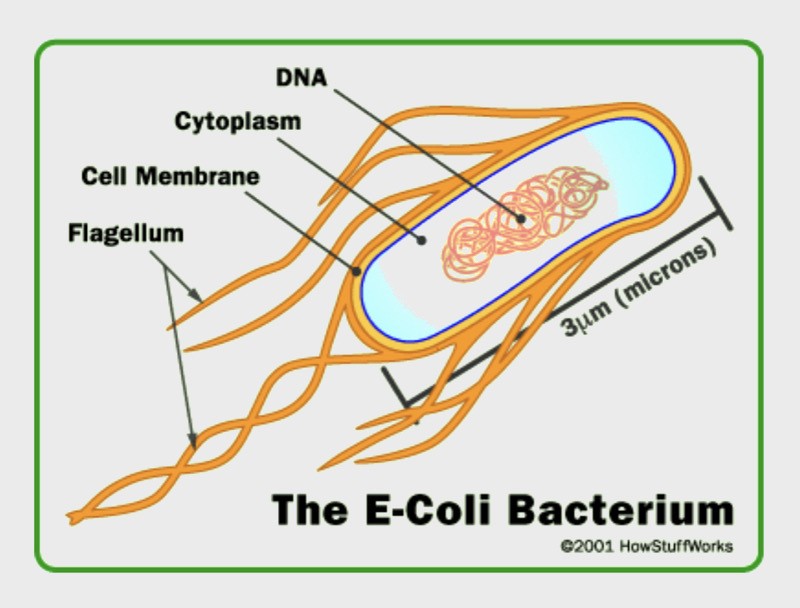
How do Bacteria Replicate?: Binary Fission
Bacteria replicate using their own machinery through a process called binary fission, in which one bacterium divides into two. Though similar, binary fission is a much simpler and faster process than mitosis.

- The DNA copies itself, forming two genetically identical copies.
- The cell enlarges, and divides into two new daughter cells.
- The two daughter cells are clones, genetically identical copies of the parent cell.
Bacteria are well noted for their adaptability; once a bacterium finds a suitable environment, it can divide and multiply very fast. Escherichia coli, for example, can divide every 10 – 20 minutes. This means that in just 7 hours one bacterium can generate 2,097,152 bacteria!
VIRUSES
A virus does not have cells. A virus particle is basically just a package of genetic information (DNA or RNA) tucked into a protective shell (capsid), that is sometimes surrounded by a protein membrane (envelope).
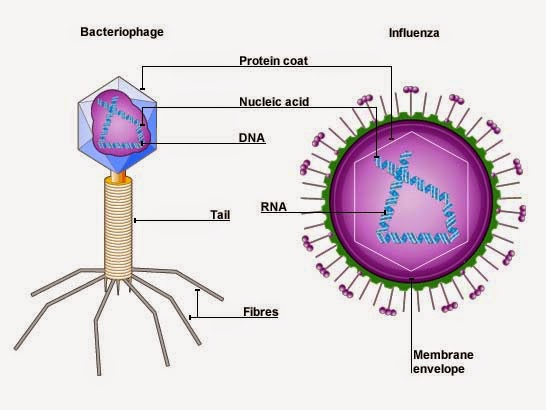
Unlike human cells and bacteria, viruses do not contain the components required to carry out the chemical reactions necessary to replicate and reproduce. A virus must therefore “invade” a host cell (bacteria, plant or animal) and appropriate its biosynthetic machinery to make more viruses.
How does this happen? Viruses lay dormant in the environment all of the time.They can gain access to a host through the nose, mouth or breaks in the skin and then find host cells to infect. For example, cold and flu viruses commonly attack cells that line the respiratory or digestive tracts while HIV assaults the immune system.
How do Viruses Replicate? The Lytic Cycle.
All viruses, regardless of what type of host cell they have infected, follow the same sequence of steps from infection to replication:
- The virus attaches to the host cell.
- The virus injects its DNA (or RNA) into the host cell.
- Once inside the host cell, the viral DNA (or RNA) commandeers the biosynthetic machinery of the host cell to replicate its viral parts.
- New viral particles are then assembled. In this way, about 200 new viruses are formed every 25 min after infection!
- As the host cell fills with new virus particles, they are eventually released in one of three ways:
– Lysis: they break open the host cell thereby destroying it.
– Exocytosis: they exit through the host cell’s own export pathways.
– Budding: they pinch out through the cell membrane thereby preserving the
host cell.

How do Viruses Replicate? The Lysogenic Cycle.
Some viruses do not replicate right away. Instead, they mix their DNA (or RNA) with the host cell’s DNA. The viral DNA becomes the part of the host cell’s chromosome and is then passed on to each daughter cell in subsequent cellular generations.
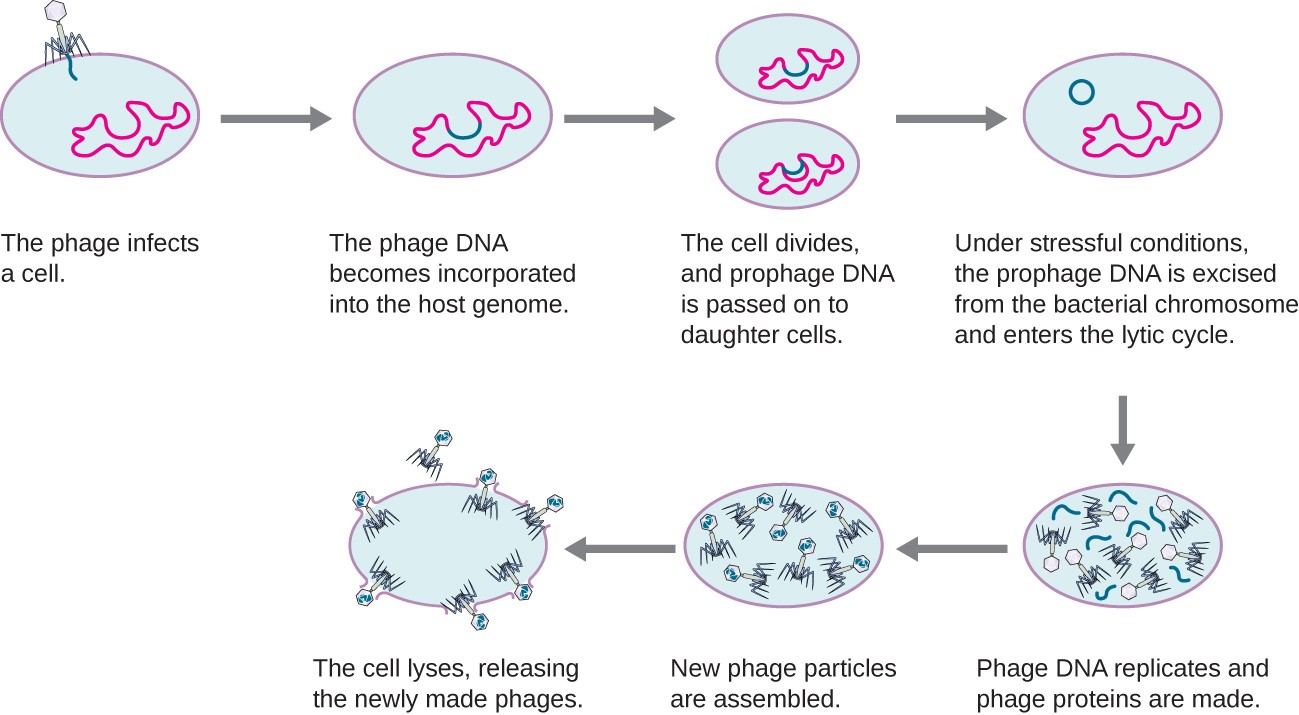
At some point, an environmental or predetermined genetic signal will awaken the viral DNA (or RNA). The viral DNA (or RNA) will then take over the host cell’s machinery and make new viruses as per “the lytic cycle”.
Regardless of their lytic or lysogenic origins, once released from the host cell, the new viruses can go on to attack other cells. Because one virus can replicate thousands more, viral infections tend to spread quickly throughout the body.
Read More: Yikes! I Caught a Bug!

